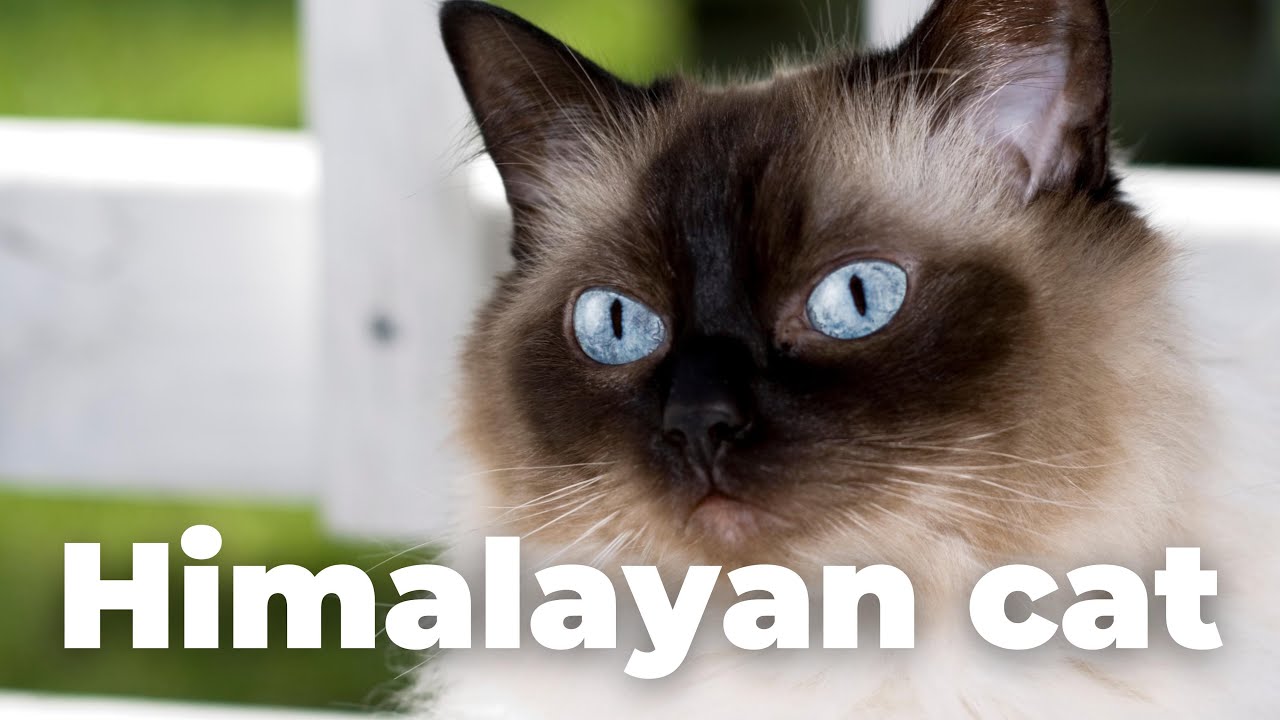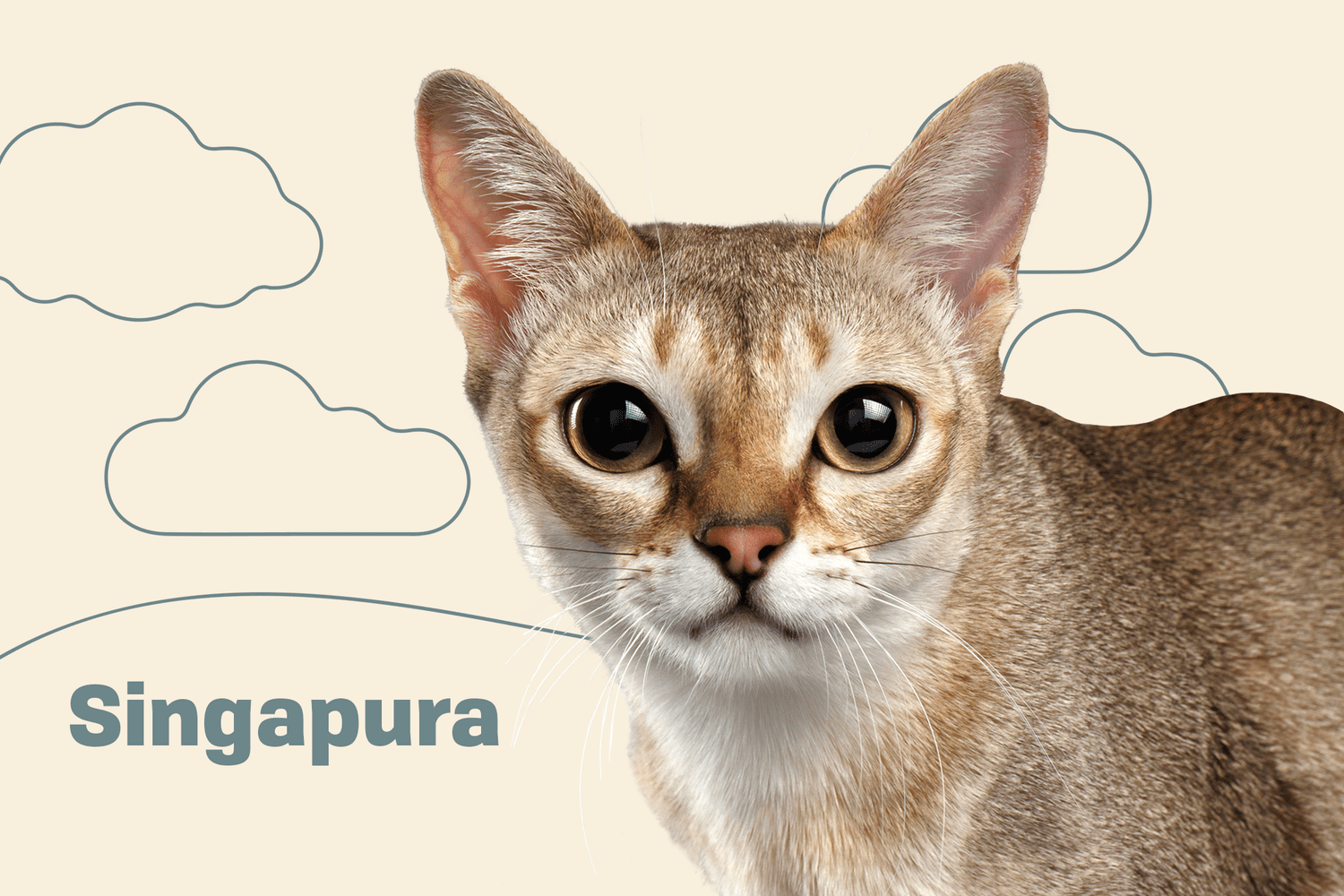The Himalayan Cat: A Complete Guide
The Himalayan cat is a stunning breed that combines the elegance of the Persian cat with the distinctive color patterns of the Siamese. Known for their long, luxurious coat, beautiful blue eyes, and sweet temperament, the Himalayan is one of the most sought-after cat breeds for those looking for a friendly, affectionate, and visually striking companion. In this complete guide, we’ll delve into the Himalayan cat’s profile, characteristics, care requirements, training, and much more. Whether you’re considering adopting a Himalayan or simply curious about the breed, this article will provide all the information you need.
1. Himalayan Cat Profile
Breed Name: Himalayan
Other Names: Himmie
Origin: United States (developed by crossing Persian cats with Siamese)
Group: Longhair
Height: 9 to 11 inches (23 to 28 cm)
Weight: 7 to 12 pounds (3 to 5 kg)
Coat Type: Long, dense, and silky
Coat Color: Colorpoint (lighter body with darker points on the ears, face, paws, and tail)
Life Expectancy: 12 to 15 years
Temperament: Affectionate, gentle, calm, and playful
Exercise Requirements: Moderate
Trainability: High
2. Key Characteristics of the Himalayan Cat
Physical Appearance
The Himalayan cat is famous for its beautiful, long coat, which comes in a variety of color patterns but is most commonly seen in colorpoint variations similar to the Siamese. The breed typically has a round face with a short, flat nose (a trait inherited from their Persian ancestors), and their large, expressive blue eyes are one of their most defining features. Their body is medium to large-sized, with a stocky frame, short legs, and a long, bushy tail.
The coat of a Himalayan is long and silky, but it does require frequent grooming to avoid tangles and matting. The colorpoint pattern means that the cat’s body is lighter in color, while the extremities, including the ears, paws, face, and tail, are darker. The most common colors for Himalayans include seal, blue, chocolate, and lilac.
Temperament
Himalayans are known for their gentle and calm temperament. They are not overly active cats but do enjoy playing and engaging with their owners, making them a good choice for families or individuals who want a companionable cat. Despite their quiet nature, Himalayans are affectionate and bond deeply with their owners. They can be quite vocal when they want attention, though they generally communicate in soft, sweet tones rather than loud meowing.
This breed tends to get along well with other pets and children, though their laid-back nature means they may be more tolerant of other pets than some more active breeds. They are not overly independent and often seek the attention of their owners, enjoying being petted and cuddled.
3. How to Choose a Himalayan Cat
When selecting a Himalayan cat, there are several factors to consider to ensure that you’re getting a healthy, well-bred kitten. Here’s how to choose the best Himalayan:
Reputable Breeder
It’s important to choose a Himalayan from a reputable breeder who focuses on the health, temperament, and well-being of the cats. Look for breeders who are members of recognized cat breeding associations, such as The Cat Fanciers’ Association (CFA) or The International Cat Association (TICA).
Health Screenings
Ask the breeder about health screenings and testing for common genetic issues in Himalayans, such as polycystic kidney disease (PKD), heart disease, and respiratory issues due to their brachycephalic face. A responsible breeder will provide you with a health guarantee and be transparent about the kitten’s health history.
Personality
Since Himalayans are affectionate cats, you should pay attention to the kitten’s temperament. Make sure they are friendly, not overly shy, and show signs of good socialization. Spending time with the kitten before adopting it will help you understand its personality.
4. How to Train a Himalayan Cat
Himalayan cats are generally easy to train, thanks to their affectionate nature and desire to please their owners. However, training should be done with patience, positive reinforcement, and consistency.
Litter Box Training
Himalayans are usually quick to learn where to do their business. It’s essential to keep the litter box clean and place it in a quiet area to make your cat feel comfortable. Be sure to introduce your Himalayan to the litter box as soon as they arrive in your home.
Basic Commands
While not known for performing complex tricks, Himalayan cats can learn basic commands, such as coming when called or responding to their name. Use treats or their favorite toy as rewards for positive behavior.
Socialization
It’s important to socialize your Himalayan cat from a young age to help them become comfortable with new people, pets, and environments. This breed tends to do well in homes with children and other pets if introduced gradually.
5. How to Care for a Himalayan Cat
Caring for a Himalayan cat requires a commitment to their grooming and overall well-being. Here’s a breakdown of essential care for your Himalayan:
Grooming
The Himalayan’s long, luxurious coat requires regular grooming to prevent tangles and matting. Aim to brush your Himalayan’s coat at least 2-3 times a week, using a wide-toothed comb or a slicker brush. Regular grooming also helps reduce shedding, which can be a problem with their thick fur. Additionally, regular baths can help keep their coat clean and shiny.
Diet
Provide a well-balanced, high-quality diet that meets the specific nutritional needs of the Himalayan cat. Look for cat food that is rich in protein, with a good balance of fats and carbohydrates. Since Himalayans can be prone to obesity, it’s important to monitor their weight and feed them appropriate portions.
Exercise
While Himalayans are not overly energetic, they still require some level of exercise to keep them healthy and fit. Encourage playtime with toys, such as laser pointers, feather wands, and puzzle feeders, which can help keep your cat mentally and physically stimulated.
Health Care
Regular veterinary visits are crucial for maintaining your Himalayan’s health. Be sure to schedule annual check-ups, vaccinations, and flea treatments. Keep an eye on their teeth, as dental disease can be an issue in this breed. Regular dental cleaning at home or at the vet is recommended.
6. Pros and Cons of Owning a Himalayan Cat
Pros
- Gentle and Affectionate: Himalayans are known for their loving and calm temperament, making them great companions.
- Quiet and Calm: They are generally quiet cats that don’t demand a lot of attention but still enjoy being petted and cuddled.
- Beautiful Appearance: The Himalayan’s long, silky coat and striking blue eyes make them incredibly attractive.
- Good with Children and Other Pets: Himalayans are typically social and get along well with kids and other animals, though they may be more laid-back around dogs or more energetic pets.
Cons
- High Maintenance Grooming: The long coat requires regular grooming to avoid tangles and matting. This can be time-consuming and require patience.
- Health Issues: Himalayans can be prone to certain health issues, including respiratory problems due to their flat faces and kidney disease.
- Not Very Active: Himalayans are less active than some other breeds and may not be as playful, which might not suit everyone’s lifestyle.
- Expensive: Himalayans can be quite costly, both in terms of initial purchase price and ongoing care, such as grooming and veterinary visits.
7. Price of a Himalayan Cat
The price of a Himalayan cat can vary widely depending on factors like the breeder’s reputation, location, and the kitten’s pedigree. On average, you can expect to pay between $500 to $1,500 for a Himalayan kitten. Cats with champion bloodlines or rare color patterns may cost more. Be aware that the cost of maintaining a Himalayan, including food, grooming, and health care, can add up over time.
Conclusion
The Himalayan cat is an extraordinary breed known for its beautiful appearance, calm temperament, and affectionate nature. While they require regular grooming and maintenance, the reward of owning a Himalayan cat is a loyal and loving companion. Whether you are drawn to their elegance or their sweet, laid-back demeanor, the Himalayan cat makes an excellent choice for pet owners looking for a gentle and beautiful cat. By understanding their care needs and choosing a responsible breeder, you can enjoy many years of companionship with this stunning breed.




